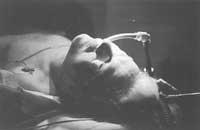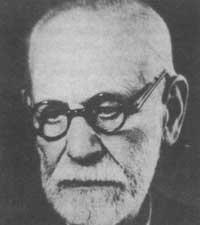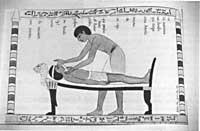History of anesthesia or pain control (and II). Discovery of local anesthesia
1991/06/01 Loizate, Alberto Iturria: Elhuyar aldizkaria
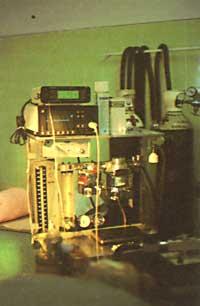
In the history of pain one more step had to be taken after narcosis, anesthesia. As in the case of Narkosis, this discovery was, to some extent, unforeseen and related to the discovery of the first anesthetic substance, Sigmund Freud, considered the father of psychoanalysis.
To find the remains of local anesthesia, we must return to the old customs of the Peruvian cechueros, lost in the dark era before the American colonization, from where they brought cocaine to Europe. For the Ketxu, the cokeel was the regalia of Manco Capac, son of the sun god, to reward the pain and respect of his people. Although initially used for religious and political acts, the conquerors of Francisco Pizarro echoed the XVI. When the Inca empire was destroyed in the 19th century, the coquilla was used to enslave and pay those of the lower social class.
This increased server performance at low cost. They were packed into a ball (coca) with guano or corn starch and chewed to release the active alkaloid containing the coca leaf. According to the anthropological documents of the time of the Inca empire, the trepanation (opening of the skull) was done with local anesthesia without excessive pains, for which the surgeon took out the saliva with the coca chewing on the wound to be silent.
To explain modern history, we must go back in time until the 1880s. Sigmund Freud was young, according to Jürgen Thorwald: Freud was 27 years old, he was a thin man with black hair, properly and very fine. Son of a failed Jewish textile seller, he left Freiburg (Moravia) in the economic crisis of 1859 to move to Vienna. Freud was a man of great sensitivity, and the one who hurt him most as a young man was the insult his father, his brothers and he suffered for being a Jew.
Freud, because of the oppression his family had to endure, dreamed from childhood of being oppressed instead of being ordered by him, and for this he decided to be captain or politician of his childhood projects. But Austrian reality soon drowned their dreams because Jews were only allowed to be traders, legislators or doctors. He was elected a doctor because commerce and law did not like. But he didn't like the doctor's usual work either. So, when the race ended, instead of starting work, he began to investigate.
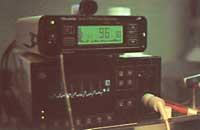
At that time, Freud was a pale and tender young man of twenty years. Marta Bernays was in love with her future wife. He needed money to get married and pursued the money that gives fame. When he dealt with the problems of psychology, he was still engaged in neurological research, while doing studies on cocaine he had just met in Europe. The idea came from reading an article in which a German soldier used to give affection and strength to his soldiers. Soon, with the material he collected and the evidence he made himself taking cocaine, he published an article entitled On Coca.
In this article, Freud defended cocaine from the scientific point of view of that time. But Freud escapes a cocaine property that would later be as useful as being anesthetic. Freud thought that cocaine could be used to spoil the eyes or abstinence of the morphine and was testing for that purpose. So cocaine is a new drug, although they knew the addiction that morphine produced, they knew nothing about the consequences of cocaine. Freud himself, like many professionals of his time, received him frequently to reinforce cocaine and work more.
And not only that; convinced that cocaine was beneficial, he also advised his girlfriend to take cocaine. Then came the conclusions. Those who took cocaine away from morphine addiction became addicted to cocaine and biographers do not know how Freud himself got rid of the danger.
One of his companions, who had abdominal pains, Freud recited a 5% cocaine solution and when he took it he realized that he had caught his lips and mouth asleep. When this happened, Koller, an occupant famous for the analgesic value of cocaine. But Freud was more concerned about brain problems and the love problems he had with his girlfriend than about realizing that detail. The ophthalmologist Koller, based on this detail, performed tests with the eyes of the animals. For the first time, with the apoos, and placing a few drops of cocaine solution in the eye of the toad, he realized that despite piercing the eye the toad did not feel pain.
And in September 1884, at the ophthalmologist congress in Heidelberg, Koller successfully presented his discovery.

Freud suffered Koller's success as a personal failure, especially considering he was the first responsible for cocaine. The treasure he used in his hands escaped him. But both Koller and Freud do not find reason, according to biographers, it must be found in the nature of each one. The sensitive Freud, possessed an unstoppable fantasy pursuing great goals, while Koller was more limited and practical.
In Freud's opinion, the loving vicissitudes he lived at that time hid him in his eyes, and that must be understood as Freud himself said in a writing: Koller is the discoverer of local cocaine anesthesia. But because of my irresponsibility then I have no anger with my girlfriend. The phrase is very significant.
From the sand and based on cocaine, there have been many topical anesthetics, being today the best known lidocaine, prilocaine, bupivacaine, mepibakaine and etidocaine. Their names are clear that their origin is cocaine. Topical anesthetics are characterized by time (latency time), the duration of action, toxicity and power. Currently we are working at the research level so that you can opt for nerve cell blocking. It is only intended to block nerve fibers with a feeling of pain.
The most widely used in the world is lidocaine. As a local anesthetic it is the most powerful and associated with a vasoconstrictor to avoid the aforementioned toxicity and maintain its effect for longer. The action of the vasoconstrictor is to prevent the aspiration of the anesthetic by contraction of the veins and capillaries, which allows a longer duration and a greater depth and duration of the effect on the place where the anesthetic has been placed. But be careful with the vasoconstrictors, because if they are punctured in extreme areas, such as the penis or the finger, they can hinder local blood circulation and cause necrosis and gangrene. Hence there are never vasoconstrictors in extreme areas.
It would be more correct for the local anesthetic to call local analgesic, since although it eliminates pain, touch and feeling of pressure they do not always disappear. However, the name of local anesthetic is more widespread.
The work of local anesthetics is to hinder the conduction of nerve impulses, nerve function, which is achieved by shaking the displacement of ions passing through the nerve membrane. We could say that they stabilize the membrane of nerve cells and, at high concentrations, cause a total stagnation of the passage of ions. This stabilization affects not only nerve cells but also others that are toned, so lidocaine is used in tachyarrhythmias of the heart ventricle. This nerve stop is not permanent. It is temporary, that is, reversible.
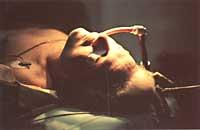
They are widely used in ophthalmology and dentistry, and are widely used in other non-surgical specialties. In general surgery, if due to patient health problems the risk of intervention with general anesthesia is excessive for the intervention of inguinal hernias, local anesthesia may be used. And not only that, but sometimes even larger interventions with local anesthesia are needed.
Lidocaine, in addition to being anesthetic, as already mentioned in cardiology, is used to cure tachyarrhythmias of the ventricle. All anesthetics, with a high degree of use, have not only local but general effects, so when pricking to obtain local anesthesia, special care must be taken not to puncture the vein, which increases the general effects unwanted.
Local anesthetics, like any other punctured substance, can produce an allergic reaction if the patient is sensitized to this substance, and if the reaction is anaphylactic shock can be a danger of death. But this can happen with any substance being pricked and the risk of local anesthetics is minimal. However, we must know that it is possible.
The toxicity of local anesthetics depends on the length of the puncture to the general circulation. If this transit occurs slowly, it will give the body time to metabolize and remove the substance, without causing damage. The toxic effect of local anesthetics occurs mainly in the central nervous system and blood systems of the heart. They can cause tremors in high doses and stop breath and weaken the heart muscle. Mixtures of the central nervous system can be cured with barbiturates. They cause dilation in the blood vessels, which can cause a dangerous drop in blood pressure.

Gai honi buruzko eduki gehiago
Elhuyarrek garatutako teknologia




